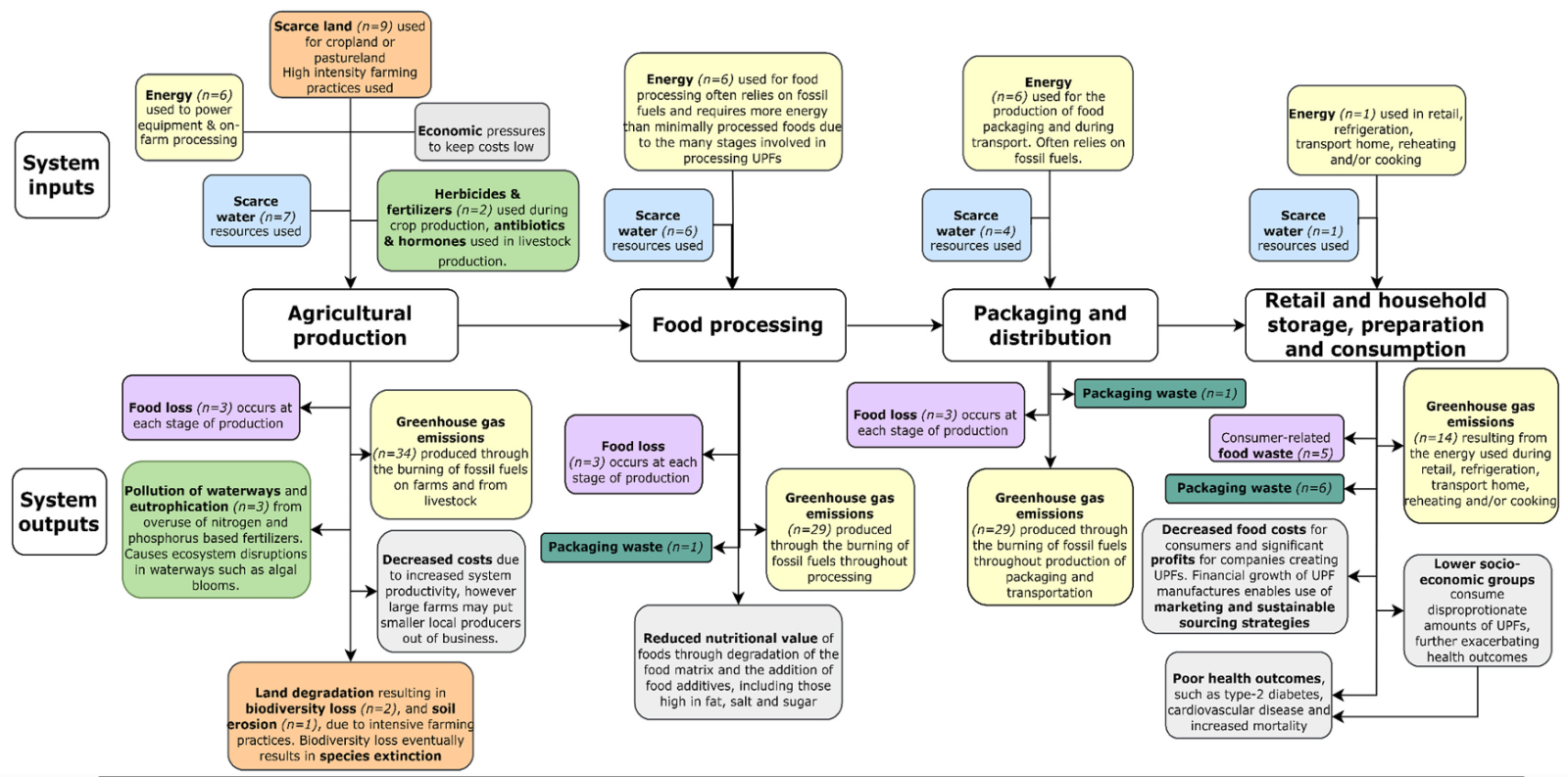September 25, 2022 | Journal of Cleaner Production | Source |
Introduction: Ultra-processed foods (UPFs) exacerbate the global food system’s failure by driving environmental harm, undermining nutrition, disrupting social food practices, and deepening economic inequalities. Addressing this gap, researchers from Deakin University and CSIRO in Australia developed a conceptual framework mapping the environmental impacts of UPFs across all stages of the supply chain, while assessing how classification terms affect outcomes. Through a narrative review and systematic search, they analyzed 52 studies (2000–2021) covering indicators such as land use, GHG emissions, water use, and waste.
Key findings: UPFs are responsible for substantial environmental impacts, accounting for up to 39% of diet-related energy use, 36–45% of biodiversity loss, and around 1/3 of GHG emissions, land use, and food waste, as well as up to a quarter of water use in high-income countries. These impacts vary by country context, food classification terms, and the inclusion of processed meats. Sweets, snacks, and drinks—a major UPF category—consume the highest share of phosphorus-based fertilizers, intensifying eutrophication. Meat-based UPFs are key drivers of GHG emissions and land degradation, while plant-based UPFs contribute to biodiversity loss and eutrophication—particularly those reliant on palm oil, soy, and cocoa, which are linked to deforestation and species extinction. UPFs also generate substantial plastic packaging waste and contribute to food waste at both household and retail levels, especially from bakery and ready-made products.
The review underscores the avoidable nature of these impacts and calls for consistent food classification, more comprehensive life cycle assessments, integration of environmental indicators, and region-specific data to guide policy. It also recommends a suite of interventions, including agricultural policies to support sustainable practices, trade reforms to localize fresh food supply chains, taxes to disincentivize UPFs, and clearer front-of-pack labels and dietary guidelines that reflect both health and environmental priorities.

Figure | A summary of the environmental impacts of UPFs throughout the food system, where n indicates number of studies identifying each respective impact. This figure was created using draw.io.





